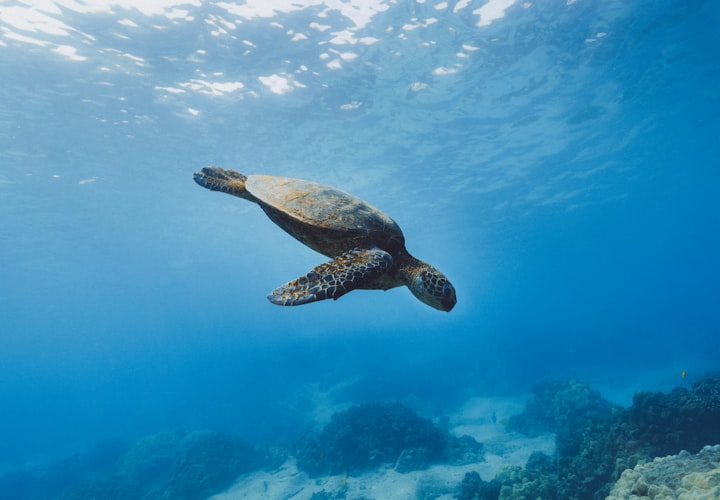
Bad News for the Arctic Ocean
In the Arctic, a year-long mission is underway here:
More than 600 people from 19 countries and hundreds of scientists have begun surveying the North Pole from a large icebreaker.
389 days after the scientists completed the measurements, the news broke.
The Arctic Ocean is dying. The Arctic is dying.
We probably don't need scientists to tell us about the impact of the greenhouse effect on global activities.
From unusually high temperatures to melting glaciers, such adverse changes have not slowed down as human society advocates low-carbon environmental protection.
The main goal of the expedition in the Arctic is to understand climate coupling processes in the Arctic so that more accurate climate models can be added to global climate models.
The findings could lead to improved weather forecasts and better forecasts of Arctic sea ice activity.
To accomplish this feat, starting on September 20, 2019, Germany joined forces with the United States to launch the project.
The main funding was provided by Germany, at a total cost of 140 million euros.
Ships are being explored with the help of icebreakers from the Alfred Wegener Institute and the Center for Oceanographic Research in Germany.
In the past, a survey was carried out in the late 19th century, when a large wooden ship, as it was called, completed the basic map.
Now, more than 100 years later, scientists have reassembled for a deeper expedition.
The expedition was eventually named Mosaic.
There are many areas of research, from sea ice and oceans, to ecosystems and biogeochemistry, to whole model building.
Many of the exploration interactions were conducted for the first time.
Unlike the Antarctic, there are no designated research stations in the Arctic, so for a long time few teams traveled there to study.
The Arctic has a strong influence on global climate change.
And the average is more than twice as fast as the average global warming.
Especially in winter, the change is more pronounced.
According to early predictions by scientists, the Arctic Ocean is likely to be ice-free in the summer by the 21st century.
Because of this drastic change, the impact is very strong and covers the weather and climate of the whole northern hemisphere.
So to some extent it's driving the rapid economic development in the Arctic.
From an economic point of view, the melting ice is gradually exposing raw materials such as natural gas, oil and metals in the Arctic.
New shipping routes As ice shelves disappear, more shipping routes can open up in the Arctic, and new fishing grounds are beginning to appear in the Arctic.
All these changes mean that a clear framework is needed to protect the sustainable development of the Arctic.
So a better understanding of the Arctic's climate and environmental systems can help protect the Arctic.
The problem behind ice floes
For scientists, climate models are mathematical tools that scientists use to predict the future of the planet.
There are many small variables in climate models that affect changes across the Arctic.
In summer, for example, warmer temperatures cause sea ice to pressure the ice sheet from above.
This increases the likelihood of collapse and changes the reflectance of the ice.
Although many levels of consideration have been included in past climate models, the impact of such changes in melting pools, as well as patterns of sea ice activity, have never been included.
One of the main reasons climate models do not work well on a small scale is that there is relatively little field data available.
So from this point of view, it is far from enough to rely on artificial satellite activities, you have to go to the site of the scientists themselves to investigate.
Dr Alison Fong, an ecosystem researcher with the Mosaic team, said:
Arctic warming has risen rapidly since the Industrial Revolution.
Scientists call the phenomenon of the Arctic warming faster than the global average "Arctic amplification."
Related studies show that ice loss is the main reason.
When the ice melts, deeper water can receive more solar radiation, leading to a warming trend in amplification.
In this respect, seawater absorbs heat radiation much better than sea ice.
Because of the reduced albedo, instead of reflecting more heat into space, the ocean surface absorbs it.
So the extreme changes are more pronounced in the Arctic than in other parts of the world, though ocean current activity is also a variable.
It is obvious from this description that the whole process of change is actually a vicious circle.
With less and less ice, the warming effect is more and more obvious, and there is little way to stop it.
As the ships traveled farther and farther, the expedition required scientists to find a thin patch of ice large enough to serve as a temporary base.
Given the right conditions, these floes can clump together and become thicker pieces of ice.
Like glue, the accumulating ice floes get bigger and bigger.
However, it doesn't have to be big enough to use it as a base.
The temperature around the sea ice and the salinity of the sea need to be measured.
What's more important is that this expedition has so many missions that the team should be able to build a small "ice city" on top of the ice floes.
In fact, this kind of ice creation is not new before.
Such zones were first established in the Arctic by Soviet scientists in the late 1930s.
And over the next 80 years, Russian scientists set up 39 drifting research stations here.
Unfortunately, the Arctic has changed a lot.
The whole area was getting warmer and warmer, and this part of the expedition was shut down in 2013.
To find a suitable ice floe, scientists also used satellite data analysis.
However, most of the observations have disappointed the scientists. Many of the ice floes are not used as bases at all, and are mainly only 50 to 70 centimeters thick.
For an ideal thickness of ice floes, you need at least 1.2 meters.
Can the future be changed?
The search for floating ice has delayed scientists, and melting ponds in the Arctic have made it difficult to distinguish between melting ponds and ice.
The thickness of sea ice in the Arctic Ocean has been shrinking since 1980 and is now about half that.
Thin layers of sea ice can quickly break down
Years of ice floes falling in thickness mean the Arctic is already warming badly.
In order to get ahead of the spring, scientists will have to work hard to collect these data and find suitable floating ice as soon as possible.
In addition, the ice pack sampling could help scientists analyze microbial changes in the ice and the role of climate influences.
The Mosaic project finally ended in October 2020, about a month and a half later than originally planned.
A large amount of scientific data may take years to come before a valid explanation can be made.
But with all the problems scientists have experienced in the past, the Arctic Ocean is dying.
Even with aggressive action, the area continues to lose ice in summer, a trend that is unlikely to reverse anytime soon.
For Native Alaskans, less sea ice means better fishing conditions.
But that's not a reason to give up on slowing global warming, which is exactly what this group of scientists is trying to do.
For those living in the Arctic, the thinning ice has made THE polar BEAR'S survival extremely dangerous.
In addition, in the action of warm and cold ocean currents, the Beaufort vortex in the Arctic circulates melted fresh water into the North Atlantic.
From the perspective of ocean currents, the influx of fresh water will weaken the strength of the Atlantic circulation.
This led to widespread climate change in Western Europe and North America.
Ultimately, the disappearance of the Arctic Ocean could affect the entire climate system.
We can't ignore the impact of climate change, and now we can't change the ecological threat of damage.
But the opportunity is still in hand, it is never too late to change.





Comments
There are no comments for this story
Be the first to respond and start the conversation.